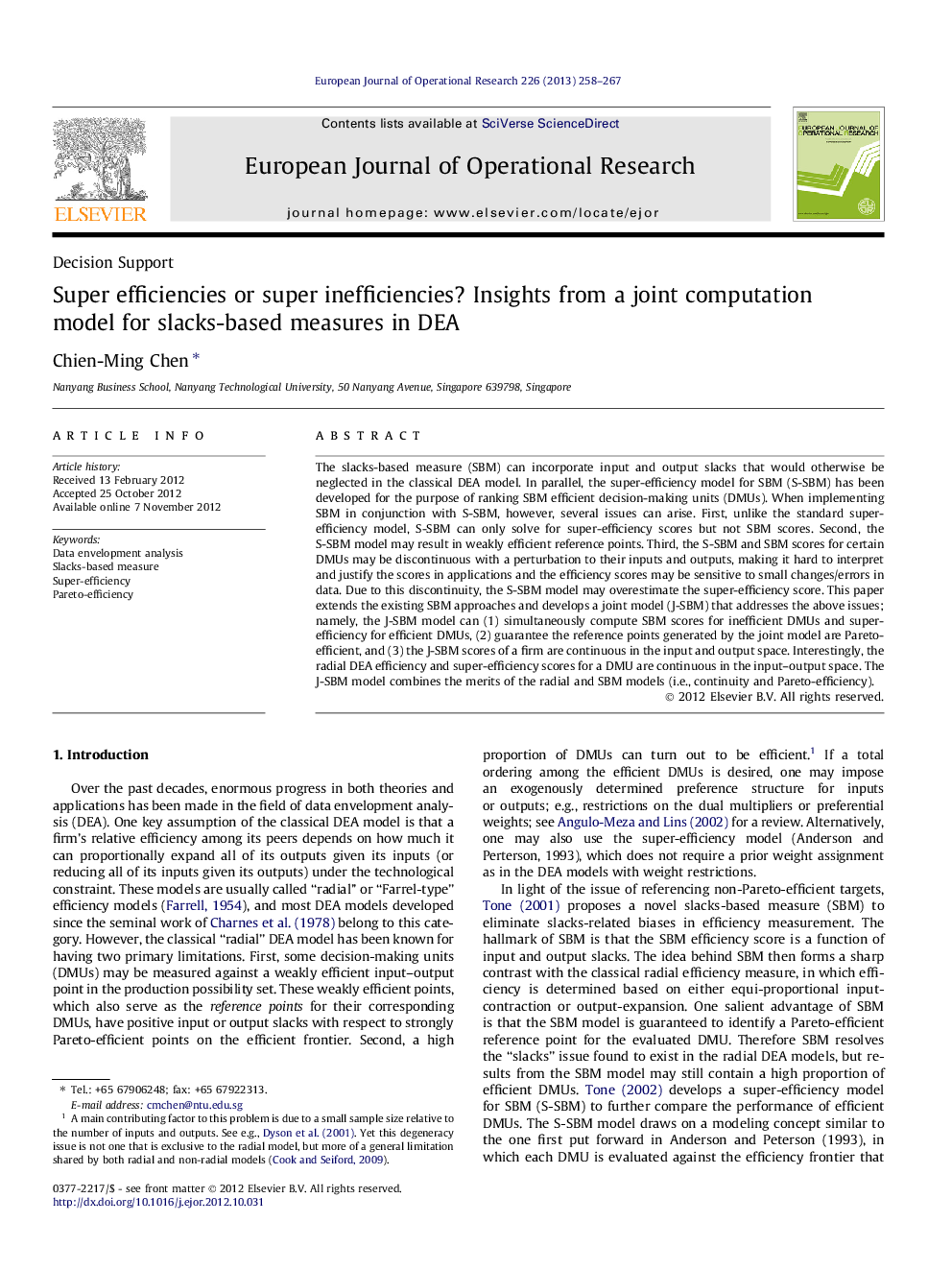| Article ID | Journal | Published Year | Pages | File Type |
|---|---|---|---|---|
| 479990 | European Journal of Operational Research | 2013 | 10 Pages |
The slacks-based measure (SBM) can incorporate input and output slacks that would otherwise be neglected in the classical DEA model. In parallel, the super-efficiency model for SBM (S-SBM) has been developed for the purpose of ranking SBM efficient decision-making units (DMUs). When implementing SBM in conjunction with S-SBM, however, several issues can arise. First, unlike the standard super-efficiency model, S-SBM can only solve for super-efficiency scores but not SBM scores. Second, the S-SBM model may result in weakly efficient reference points. Third, the S-SBM and SBM scores for certain DMUs may be discontinuous with a perturbation to their inputs and outputs, making it hard to interpret and justify the scores in applications and the efficiency scores may be sensitive to small changes/errors in data. Due to this discontinuity, the S-SBM model may overestimate the super-efficiency score. This paper extends the existing SBM approaches and develops a joint model (J-SBM) that addresses the above issues; namely, the J-SBM model can (1) simultaneously compute SBM scores for inefficient DMUs and super-efficiency for efficient DMUs, (2) guarantee the reference points generated by the joint model are Pareto-efficient, and (3) the J-SBM scores of a firm are continuous in the input and output space. Interestingly, the radial DEA efficiency and super-efficiency scores for a DMU are continuous in the input–output space. The J-SBM model combines the merits of the radial and SBM models (i.e., continuity and Pareto-efficiency).
► Explore three key computational issues that may arise when applying the super-efficiency model for slacks-based measure (SBM). ► Develop a joint model that ambidextrously computes efficiency scores and super efficiency scores for SBM. ► The joint model always generates Pareto-efficient reference targets. ► The joint model overcomes the discontinuity between the SBM and slacks-based super-efficiency scores, and shows that SBM may overestimate the super-efficiency score. ► The joint model can identify a zone in the input–output space linking technical inefficiency and super-efficiency.
